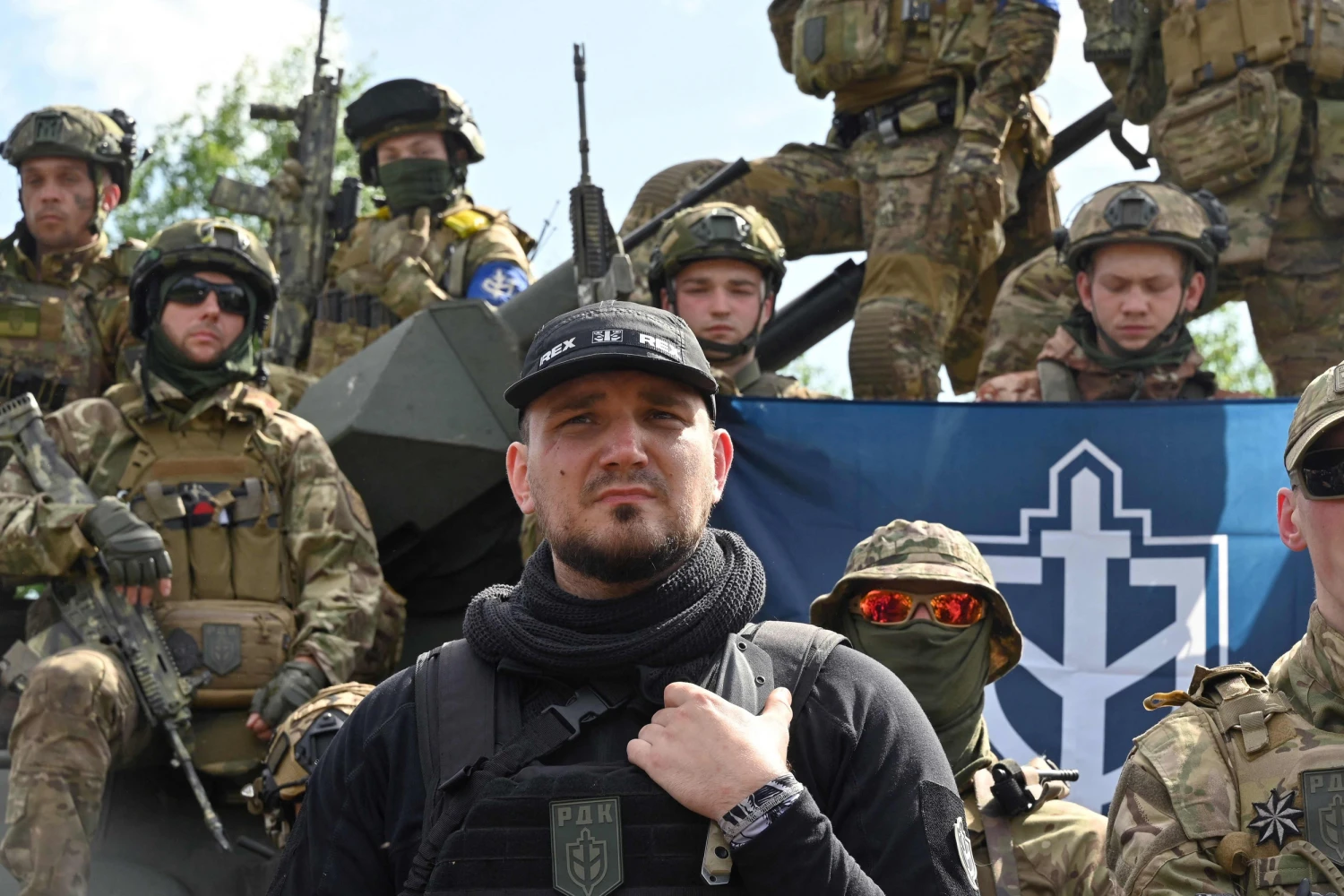As a result of fighting Moscow as a NATO proxy for more than two years, Ukraine’s armed forces have depleted their manpower, air defenses, arms, and ammunition. Since the catastrophic failure of Kiev’s summer counteroffensive last year, the war effort has focused more on artillery and drone attacks as well as raids by neo-Nazi militias against the Russian mainland.
In a recent interview with Politico, Denis Kapustin, also known as Denis Nikitin, describes his Russian Volunteer Corps’ (RVC) role in Ukraine’s war with Russia. The RVC is armed with NATO weaponry as well as US armored vehicles, the group maintains ties with Ukrainian military intelligence (HUR), and has repeatedly launched cross-border raids into civilian areas of Russia, notably the Belgorod region and Kursk, attacking towns and villages. The group is said to be made up of Russian citizens including some members of the neo-Nazi Azov Battalion who fought, since 2014, for Kiev during the Donbas war.
While Berlin has named Kapustin “one of the most influential neo-Nazi activists” in all of Europe, Kapustin told Politico “We’re the bad guys but fighting really evil guys.” Besides the RVC, there are other Ukraine-backed paramilitary groups with origins in Russia leading these cross-border raids including the so-called Freedom of Russia Legion and the more recently established Siberian Battalion. All three participated in an attack last month against Belgorod and Kursk.
The Russian Defense Ministry announced “all attempts by Ukrainian forces to cross into the territory of the Belgorod and Kursk Regions from March 12 through 15 were repelled. Air strikes and artillery fire destroyed more than 550 troops, 16 tanks, 19 armored fighting vehicles, including 11 US-made Bradley vehicles, and 15 motor vehicles.” Alexei Baranovsky of the Freedom of Russia Legion claimed their terrorist attack “disrupted the plans of the Russian army and caused significant damage to it.”
According to Russian authorities, more than 2,000 fighters were involved in last month’s raids.
A press conference was held in Kiev with leaders of the three groups shortly after the operation took place. “[The militias] said they received intelligence and logistics support from the Ukrainian armed forces, but repeated their assertion that they were acting independently of [Kiev] when fighting on Russian territory. Kapustin said Ukraine provided ammunition and medical evacuation for his fighters,” Reuters reported.
“[The Freedom of Russia Legion is] a regular unit of the Armed Forces of Ukraine,” Baranovsky told Politico during the press conference. “When we are on the territory of Ukraine — we are servicemen of the Ukrainian army, equal in all rights and duties to all other servicemen of Ukraine. When we go to the territory of Russia — we are no longer Ukrainian servicemen, we are Russian citizens who have taken up arms,” he clarified.
According to the outlet, the ties between HUR and the RVC are not universally popular. An unnamed official sitting on Ukraine’s National Security and Defense Council lamented, “And for what? These militias are a sideshow. They can’t influence the war’s dynamics. Maybe they disrupt a bit behind the lines and are embarrassing for the Kremlin but that doesn’t outweigh the overall propaganda disadvantages of using them.”
This view is contrasted with that of the head of HUR, Kyrylo Budanov, who enthused the militias are “good warriors” during the attack last month. “They’ve been helping us since the first day… they have fought in many of Ukraine’s hottest spots. We’re going to try and help them as much as we can,” Budanov continued. Andriy Yusov, a spokesman for HUR, agrees, saying “Ukraine should obviously also assist those Russians who are fighting against [Russian President Vladimir Putin’s] regime to free Russia.”
Yusov claims the militias do not act on direct orders from Kiev when storming over the border into Russia during their raids. Kapustin explains that the groups have freedom of action inside Russia, however, their attacks are closely coordinated with HUR which assists with logistical support, financial backing, the vetting of operational plans, and the provision of arms.
These three paramilitary outfits are formally part of the armed forces of Ukraine; they are enlisted to the International Legion, Kapustin says. He adds, “We are an official part of [the] Ukrainian army but we have serious political ambitions and political agenda — to march to Moscow and dismantle the Putin regime. That is obviously in the interests of Ukraine.”
It is not clear how many fighters belong to any of these three militias, but Kapustin assures “We are now definitely a sizable force, possessing our own arms and vehicles, possessing our own mortars, heavy machine guns and artillery. RVC is not anymore a gang. It is a regiment. We have bases. We have our recruitment system.”








